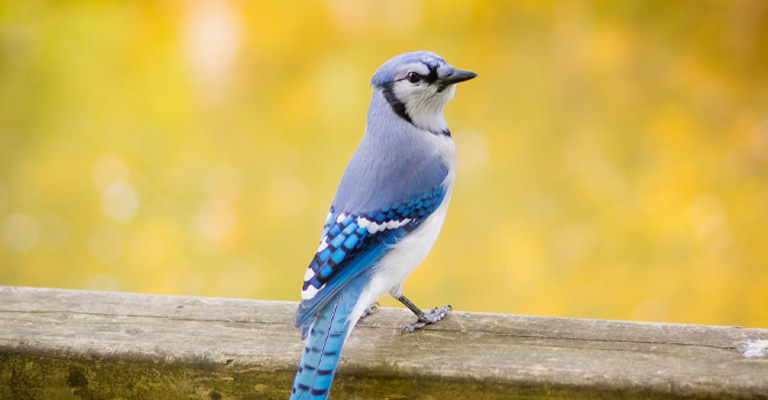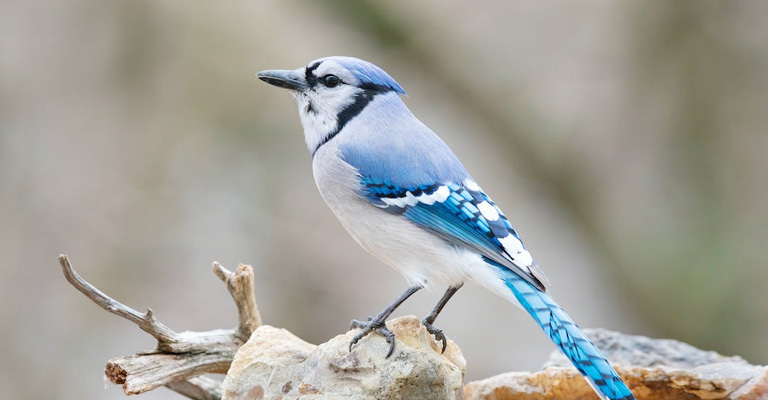Almost all of us know about the beautiful blue jay birds. They are mostly popular for their different shades of blue and beautiful high crest. In fact, they are so popular that a Canadian baseball team is named after them, called – the Tolue Jays.
Besides Canada, blue jays are widely found in the Northern parts of the United States. They have a high reputation for being aggressive. But do blue jays eat other birds? Wait for it! The answer might surprise you!
Key Highlights:
- Scientific Name: Cyanocitta Cristata, commonly known as Blue Jays belongs to the Corvid family.
- Blue Jays are commonly territorial. If you go near their nest, they would squawk and drive you away.
- They would also drive away other birds to dominate the birdfeeders.
- Only 1% of blue jays were found with the remains of eggs of other birds in their stomach.
- The primary diet of the Blue Jays includes seeds, fruits, and insects. 75% of their food source includes vegetables and plants every year.
- They usually prefer to adopt a dietary routine that’s easily available and accessible.
So, what do you think? Do all the traits we mentioned here point out a rich protein diet? Keep reading and you will find the answer.

Overview of Blue Jays Diet
Before we jump to any conclusion, let’s have a detailed insight into their food habit. From what we have discussed above, blue jays are omnivorous. But the regular diet doesn’t involve a significant amount of meat. You can add the ingredients mentioned below to their diet.
Seeds: Blue jays are avid seed-eaters and frequently look for seeds such as acorns, beech nuts, sunflower seeds, and other small seeds found on the forest floor. Seeds usually cover a majority of their diet, exceeding 50% or more.
Nuts: They can crack open hard nut shells, and commonly feed on nuts like acorns, hickory nuts, and beechnuts.
Fruits: You can also add fruits to their diet. They love fruits and that includes, berries (such as blueberries and strawberries), cherries, grapes, apples, and agricultural crops like corn.
Insects: To make up the protein needs, blue jays usually feed on insects. It is during their breeding seasons when they need additional protein.
They may have insects in mid-air or hunt for them among leaves and branches. Additionally, they also add spiders, snails, and earthworms. But do blue jays eat other birds? Read till the end of this part.
Vegetation: Although less common, blue jays may eat plant matter, including buds, leaves, and certain flowers.
Egg & Other Animals:
Thief! Is it so? Although not in common, blue jays have records to raid the nests of other birds and consume their eggs or nestlings on occasion. It generally happens when their food is limited.
Additionally, they are also known to trouble a few predators like house cats, owls, and red-tailed hawks. Occasionally, they may capture and consume small vertebrates like frogs and small rodents.
It still isn’t a direct answer to whether the blue jays eat other birds or not. Blue jays are not predator types. They usually don’t target other birds. Details below,
Do Blue Jays Eat Other Birds?

Blue jays are naturally granivorous (seed-eating). They are usually social but only around their own kind. Given their size and protective behavior, they genuinely bully other birds, even humans, and other predators too.
But do blue jays eat other birds? Not under regular circumstances. They may feed on smaller birds or their younger ones, especially the fledgling only when food is severe. Also, keep in mind that, blue jays are intelligent birds.
They may occasionally raid the nests of smaller birds in search of eggs. However, it isn’t a significant part of a blue jay’s regular diet. So, where does it all begin?
It all started with a myth. Because the blue jays belong to the Corvid family, most of the members of this family generally hunt on smaller birds such as crows and ravens.
This is where it started that, the blue jays also eat other birds. We have put together some other common myths related to the Blue Jays too. Let’s read.
Myths About the Blue Jays
Here are some common misconceptions about blue jay birds. Be aware of them to prevent further confusion.
1) They Target Adult Birds
It’s a common misconception that blue jays attack all kinds of birds. But in truth, they rarely target adult birds. Blue Jay potentially targets eggs and nestlings of other birds, which are easier to access and consume than adult birds.
2) Blue Jays Are Predator Birds
This myth is pushy because the blue jays belong to the Corvid family. However, they are not specialized bird predators. Their food list involves seeds, nuts, fruits, and insects. While they may occasionally eat eggs or nestlings, this behavior doesn’t define their overall diet.
3) They Solely Depend On Protein
A varied diet is the best solution for the survival of blue jays, and any other birds. No species from the animal and bird kingdom can rely on one type of food only. It would make them vulnerable and also won’t satisfy all the nutrition they need.
Keep in mind, that the versatile selection of diet based on season and food availability contributes to their resilience in the wild.
In summary, Blue jays are primarily seed-eaters, with a selection of nuts, fruits, and insects like any other birds. They are usually not predators but can be under special circumstances such as food scarcity or competition, nesting habitat, or change of season.
More to Learn
Congratulations! Now, you know the truth and myths behind the story of the blue jays. Blue jays are actually the real-life representation of Angry Birds. But they are not harmful to other birds unless they have to.
Despite our discussion today, blue jays like any other birds, play a significant role in our ecosystem. They contribute to seed dispersal, control insect populations, and positively affect the overall biodiversity of their habitats.
And, we shouldn’t antagonize them too often! You can learn more about birds and indulge your feather friends with us. We share regular tips on how you can secure a better future for them.
Keep in touch with us for more!